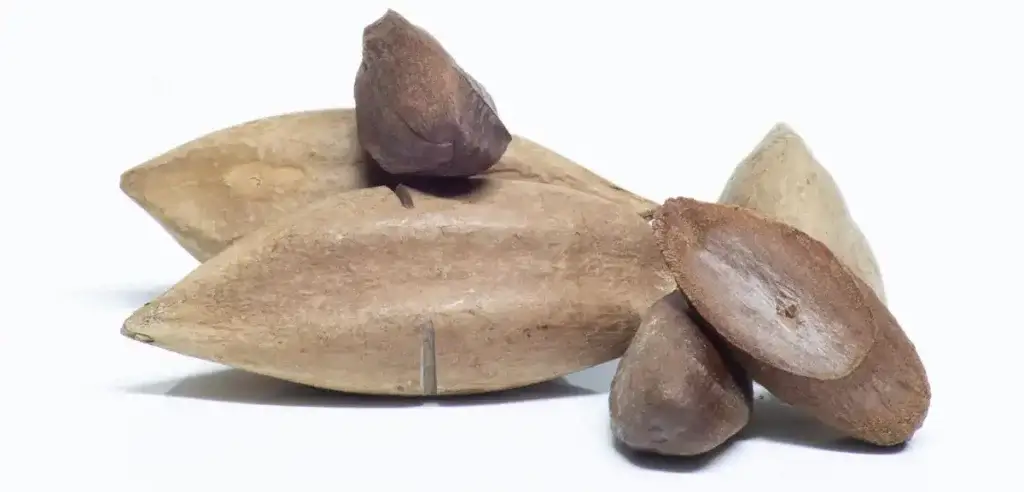The Amazing Health Benefits of Pili Nuts for everyone
The Health Benefits of Pili Nuts: They are a nutritious and delicious snack that offer many health benefits. These nuts are an excellent source of healthy fats, protein, and fiber. They also contain a range of important vitamins and minerals, including magnesium, phosphorus, and zinc. In addition, pili nuts are a good source of antioxidants and have been shown to improve blood sugar control.
All of these factors make them a great choice for people looking to improve their overall health. They are also very versatile and can be used in a variety of recipes. For example, they can be roasted and used as a topping for salad or added to granola for a nutritional boost.
What are pili nuts?
Pili nuts are the edible seeds of the pili tree, which is native to Southeast Asia. The tree grows to a height of 60-70 feet (18-21 meters), with large, leathery leaves and clusters of yellow or orange flowers. The fruits of the tree are oval-shaped, about 5-10 centimeters long, and contain a large seed that is surrounded by a thin, fleshy coating.
They have a sweet, buttery flavor and a crunchy texture. They are often used in Southeast Asian cuisine, either as a snack food or as an ingredient in dishes such as curries and stir-fries. Pili nuts are a good source of protein, fat, and carbohydrates, and they also contain vitamins and minerals such as calcium, phosphorus, and potassium.

Unlike other nuts, they contain very little fat and are a good source of protein. Pili nuts can be eaten raw, roasted, or used in baking. They are also sometimes used as a natural sweetener or flavor enhancer in Filipino dishes.
How do pili nuts (pili tree) grow?
Pili nuts are the fruit of the pili tree, a tropical evergreen that is native to the Philippines. The pili nut is spherical in shape and has a thick, hard shell. Inside the shell is a thin layer of edible flesh that surrounds a single large seed. Pili nuts are often used in Filipino cuisine, and they can also be roasted and eaten as a snack.
Pili trees are believed to have originated in Mindanao, an island in the southern Philippines. From there, they were introduced to other parts of the Philippines and eventually spread to Malaysia, Indonesia, and Taiwan. Pili trees grow best in tropical climates with high humidity and ample rainfall. They typically reach a height of 60-70 feet (18-21 meters) and have reddish-brown bark.
The leaves are dark green and glossy, and the flowers are small and white. Pili trees typically begin bearing fruit after 4-5 years. The fruits ripen from October to December and they are harvested by hand. Once collected, the nuts are hulled and dried in the sun or in a dehydrator. The dried kernels can be eaten whole or ground into flour for use in baking.
What to look for when buying pili nuts?
When shopping for pili nuts, it is important to choose a product that is fresh and of high quality. They should have a firm texture and a rich, buttery flavor. They should also be free of blemishes and discoloration. For the best results, look for pili nuts that have been grown in an organic and sustainable way. These nuts will be fresher and more flavorful than those that have been mass-produced.
When stored properly, pili nuts can last for several months. However, they will eventually begin to lose their flavor and texture. For this reason, it is best to buy pili nuts in small quantities and consume them within a few weeks of purchase. By following these guidelines, you can be sure to choose a product that is both delicious and nutritious.
Pili nut nutrition facts
The nuts are typically oval in shape and have a hard outer shell. The flesh of the nut is white and crunchy, with a mildly sweet flavor. They are an excellent source of nutrients, including protein, fiber, and healthy fats. They are also a good source of vitamins and minerals, such as vitamin B1, manganese, potassium, and magnesium. In addition, they contain all the essential amino acids.
Pili nuts have a range of health benefits, including promoting heart health, aiding weight loss, and supporting cognitive function. They are also said to be helpful in managing diabetes and reducing inflammation. Pili nuts can be enjoyed on their own or used as an ingredient in various dishes.
100 grams of raw pili nuts contain the following nutrients:
- 718 calories
- 4.64 grams carbohydrates
- 75 grams fat (34% saturated fat, 44% monounsaturated fat, and 22% Polyunsaturated fat)
- 10.7 grams protein
- 2.9 grams fiber
- 2 milligrams manganese (100% of RDI)
- 1.1 milligram Vitamin B1 – thiamin (100% of RDI)
- 1.1 milligrams copper (90% of RDI)
- 298 milligrams magnesium (95% of RDI)
- 567 milligrams phosphorus (81% of RDI)
- 3.5 milligrams iron (44% of RDI for men, 20% for women )
- 2.8 milligrams zinc (28% of RDI)
Health Benefits of Pili Nuts
Pili nuts are an excellent source of healthy fats, protein, and fiber. They are also a good source of magnesium, potassium, and iron. In addition, pili nuts contain powerful antioxidants that can help to protect the body from damage caused by free radicals. Some research has even shown that pili nuts may help to reduce the risk of certain chronic diseases, such as heart disease and cancer. Consequently, incorporating pili nuts into your diet may offer a multitude of health benefits.
Great for building bone strength
Pili nuts are an excellent source of manganese, a mineral that plays an important role in bone development. Manganese helps the body absorb calcium and phosphorus, two of the main minerals involved in bone formation. Numerous studies have shown that manganese deficiency can lead to impaired bone growth and an increased risk of fractures.
In addition, pili nuts contain other nutrients that are important for bone health, such as phosphorus and magnesium. Phosphorus is a key component of bone tissue, and it helps to prevent bone loss by regulating calcium levels in the body. Magnesium is also necessary for healthy bones, and it helps to reduce the risk of osteoporosis. Pili nuts are a delicious and nutritious snack that can help to keep your bones healthy and strong.
Provides a wealth of micronutrients and antioxidants
Pili nuts are an excellent source of micronutrients and antioxidants. They are a good source of vitamin B1 (thiamin), as well as potassium, phosphorus, and magnesium. They also contain flavonoids, carotenoids, and phenolic acids, which have been shown to have antioxidant activity.
Loaded with heart-healthy fats
Pili nuts are loaded with healthy fats, including oleic acid and palmitic acid which have been linked to various health benefits, including reduced inflammation and a lower risk of heart disease. Additionally, pili nuts are a good source of magnesium, which is another nutrient that has been linked to improved heart health.
Most of the fat in pili nuts is monounsaturated, which has been shown to enhance mood, prevent weight gain and increase bone density. Pili nuts are also very low in carbohydrates, making them a perfect snack for people on a ketogenic diet. In addition to being a delicious snack as is, pili nuts can also be used to make keto-friendly desserts and energy bites.
Helps you lose weight
They are rich in healthy fats, fiber, and protein, making them an excellent snack for people who are trying to lose weight. Pili nuts contain oleic acid, which has been shown to boost metabolism and help burn fat. In addition, the fiber in pili nuts helps to keep you feeling full longer, making it easier to stick to your diet. The protein in pili nuts helps to build muscle, which can help you burn even more calories. So if you’re looking for a healthy and delicious way to lose weight, add some pili nuts to your diet.
Protection against heart disease
Pili nuts are an excellent source of healthy fats, proteins, and vitamins, making them a beneficial addition to any diet. In particular, pili nuts have been shown to provide protection against heart disease. The oleic acid content of pili nuts helps to lower bad cholesterol levels and reduce inflammation, while the magnesium and potassium content helps to maintain a healthy blood pressure.
Additionally, the antioxidants present in pili nuts help to prevent damage to the arteries. As a result, including pili nuts in your diet can help to reduce your risk of developing heart disease. So if you’re looking for a heart-healthy snack, reach for some pili nuts instead of a bag of chips.
How to prepare pili nuts?
Pili nuts are an extremely versatile ingredient and can be used in both sweet and savory dishes. The first step in preparing pili nuts is to remove the husks. This can be done by soaking the nuts in water for several hours or using a nutcracker to remove the husks. Once the husks have been removed, the nuts can be roasted, sauteed, or boiled. Pili nuts can also be ground into a paste, which can be used as a spread or as a base for sauces. No matter how you choose to prepare them, pili nuts are sure to add a unique flavor to your dish.
Risks of eating pili nuts
While pili nuts are safe for most people to eat, there are some potential risks to be aware of. First, pili nuts contain a significant amount of fat, which can lead to weight gain if eaten in large quantities.
Like other types of nuts, pili nuts may cause an allergic reaction in those with a tree nut allergy. Symptoms of an allergic reaction can range from mild ( such as itching and swelling) to severe (such as difficulty breathing and anaphylaxis). Therefore, it is important to avoid pili nuts if you have a tree nuts allergy.
Additionally, the high levels of magnesium in pili nuts may cause diarrhea or stomach upset in some people. Finally, pili nuts can be a choking hazard, especially for young children. While pili nuts are generally safe when consumed in moderation, it is important to be aware of the potential risks before consuming them.
Final thoughts
The benefits of pili nuts are many! They are an excellent source of nutrition, and they offer a variety of health benefits. They are a good source of protein, fiber, and healthy fats, and they contain a wide range of vitamins and minerals. Pili nuts are also low in calories and carbs, making them an ideal snack for people who are trying to lose weight or maintain a healthy weight. Additionally, pili nuts have been shown to improve blood sugar control, reduce inflammation, and boost heart health. Overall, pili nuts are a nutritious and health-promoting food that can be enjoyed as part of a healthy diet. Thanks for reading!
FAQs
By NutriWins team










